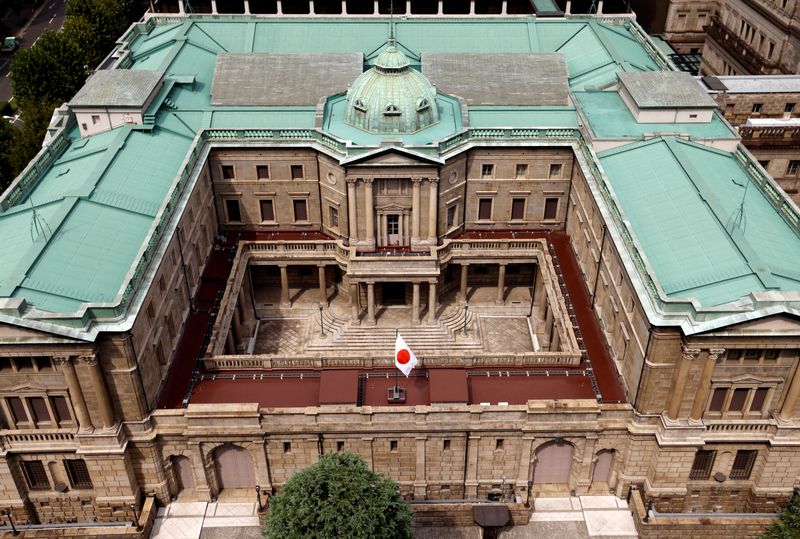By Kevin Buckland and Brigid Riley
TOKYO (Reuters) - The Bank of Japan intervened in the Japanese government bond (JGB) market on Friday for the fifth time this month after the 10-year yield pushed to a fresh decade high, pitting the central bank in a fight against market forces as U.S. yields surge.
The benchmark JGB yield climbed to 0.845% right at the start of the trading day, its highest since July 2013, after revisiting peaks the previous day as well.
But it eased immediately after the BOJ announced a fund-supplying operation, aimed at encouraging financial institutions to snap up cheap loans in order to buy JGBs. However after retreating as low as 0.83%, the benchmark yield had crept back to 0.835% by 0610 GMT, just half a basis point below Thursday's closing level.
The BOJ caps the 10-year yield at 1% under its yield curve control (YCC) policy, after doubling it in a surprise move at the end of July. However the central bank has shown it will not tolerate sharp moves toward the ceiling, stepping in several times to curb the pace of increases.
"The BOJ wants market participants to acknowledge that they're still there with YCC," said Shoki Omori, chief Japan desk strategist at Mizuho Securities.
"The message is simple: Don't sell JGBs too much, and don't challenge the BOJ."
Policymakers have stepped up intervention in recent weeks, with Japanese rates succumbing to the gravitational pull of U.S. yields. The 10-year Treasury yield briefly breached the psychological 5% mark on Friday for the first time in more than 16 years.
The BOJ offered to supply five-year loans against collateral in its latest operation, deploying the tool for the second time this month. Its other go-to option is to make additional bond purchases, which it has conducted three times this month, including earlier this week.
Japan's central bank is walking a tightrope with bond market intervention, which risks tipping the yen to the weaker side of 150 per dollar, a level that many see as a red line for currency intervention.
Yawning interest rate differentials have driven a slump as deep as 7.1% in the yen against the dollar since the BOJ's July 28 policy announcement, as the promise of more flexibility in the conduct of YCC was overwhelmed by the relentless climb of U.S. yields.
However the exchange rate has stabilised below 150 since briefly topping that level at the start of the month, only to violently pull back. Some had speculated that authorities had intervened in the currency market, but BOJ data suggests that was not the case.
The weak yen is a political flashpoint, driving up imported energy and food prices at a time when Prime Minister Fumio Kishida may be pondering a snap election.

"If the yen crosses 150, it would of course be more difficult for the BOJ to intervene in the JGB market. But because the yen is stable, the BOJ is able to try and rein in long-term interest rates, and watch the reaction in the foreign-exchange market also," said Masayuki Kichikawa, chief macro strategist at Sumitomo Mitsui DS Asset Management.
"That's the kind of delicate balancing act facing the BOJ."